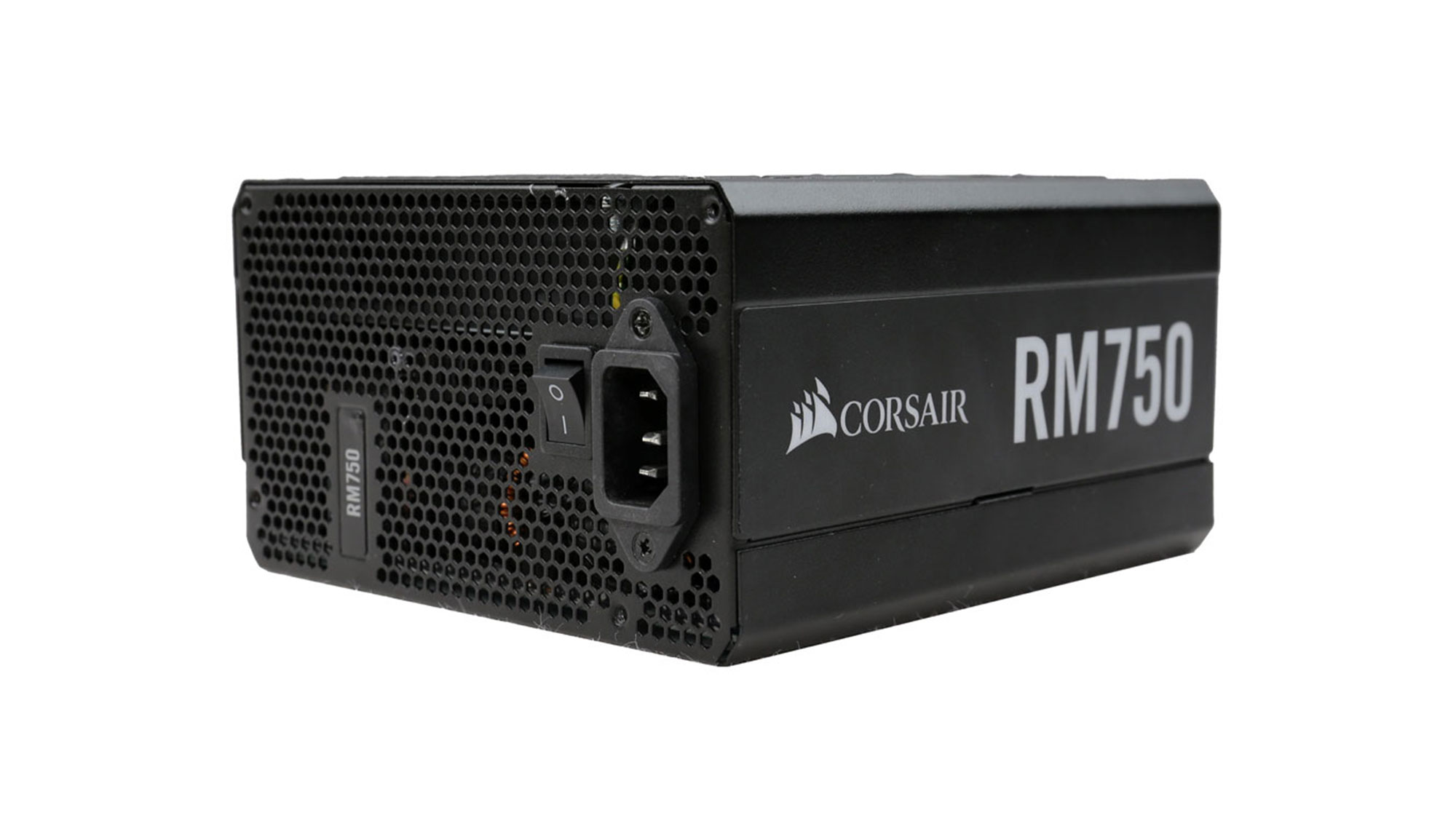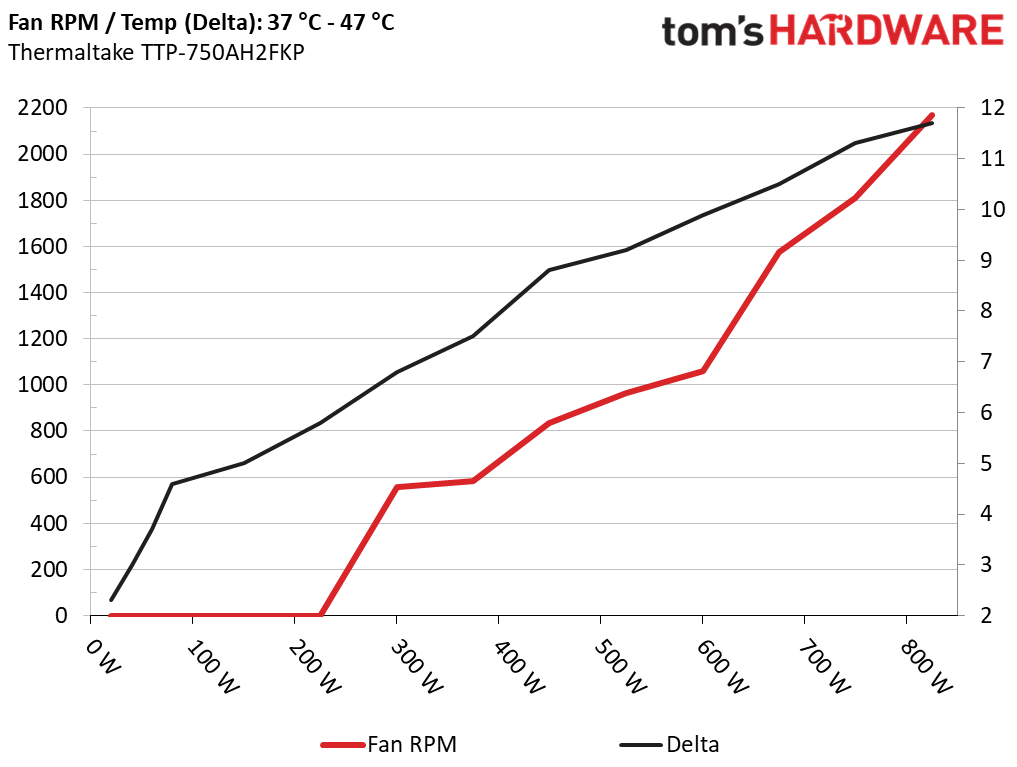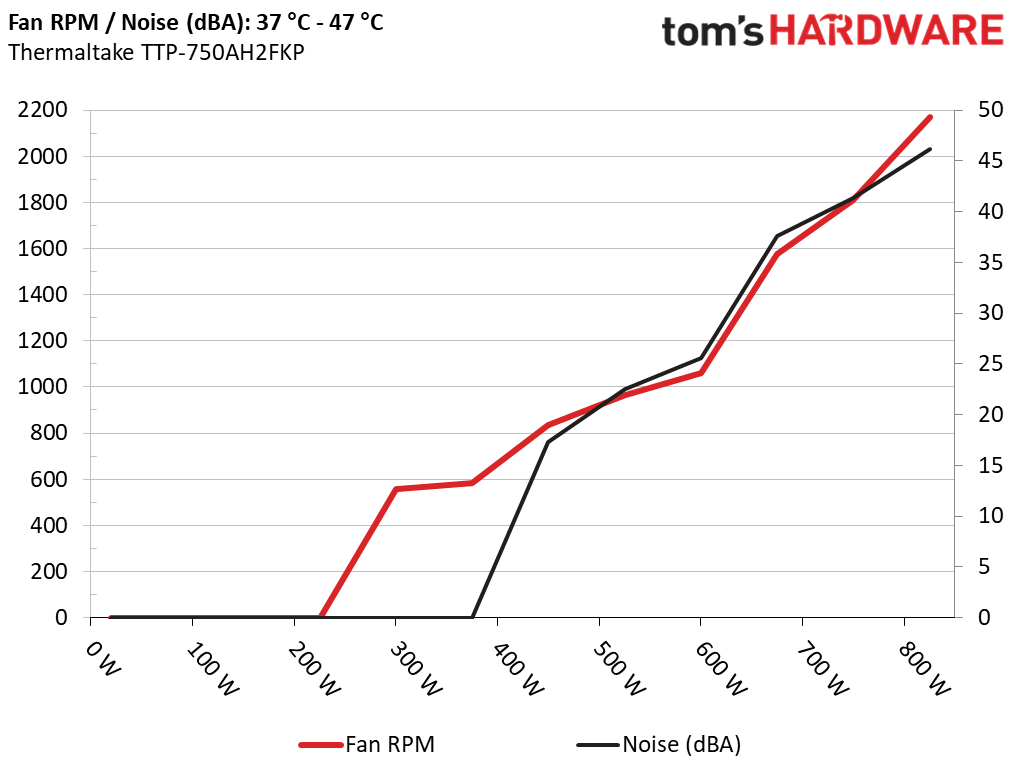Why you can trust Tom's Hardware
To learn more about our PSU tests and methodology, please check out How We Test Power Supply Units.
Primary Rails And 5VSB Load Regulation
The following charts show the main rails' voltage values recorded between a range of 40W up to the PSU's maximum specified load, along with the deviation (in percent). Tight regulation is an important consideration every time we review a power supply because it facilitates constant voltage levels despite varying loads. Tight load regulation also, among other factors, improves the system’s stability, especially under overclocked conditions and, at the same time, it applies less stress to the DC-DC converters that many system components utilize.

Results 1-8: Load Regulation
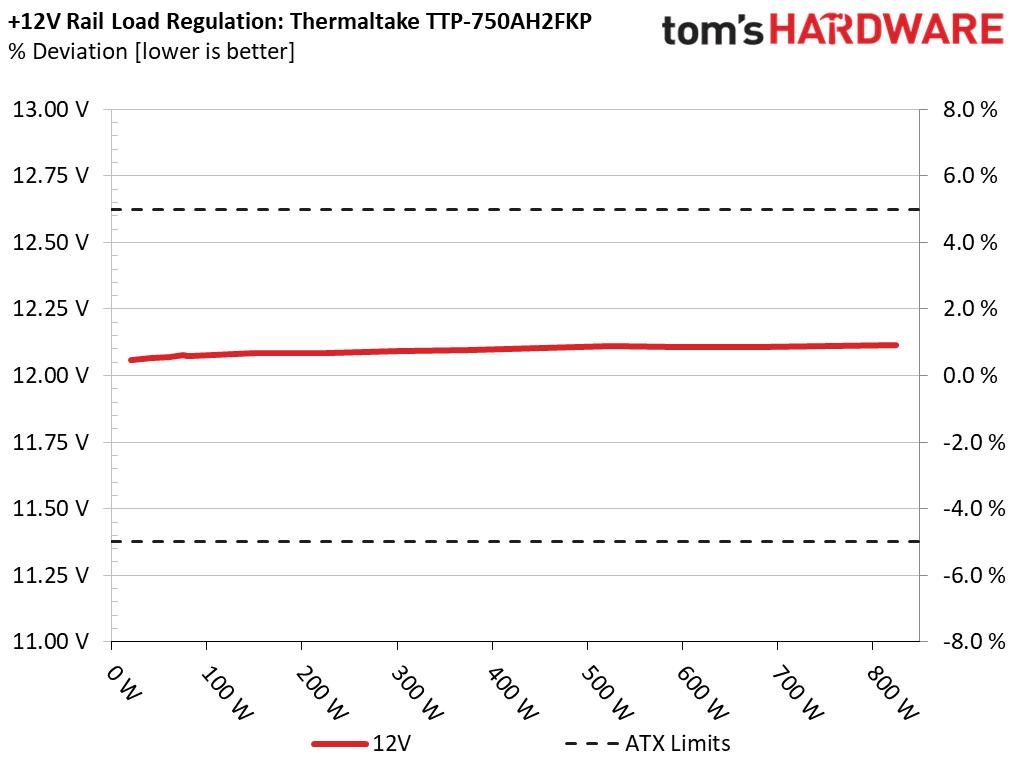
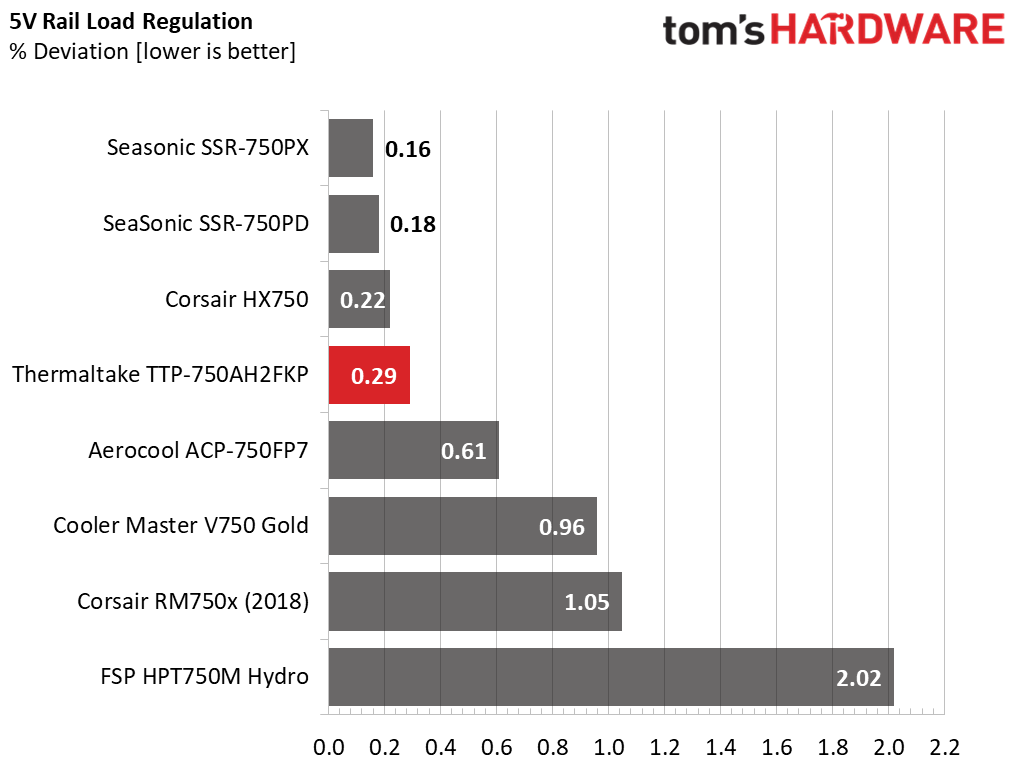
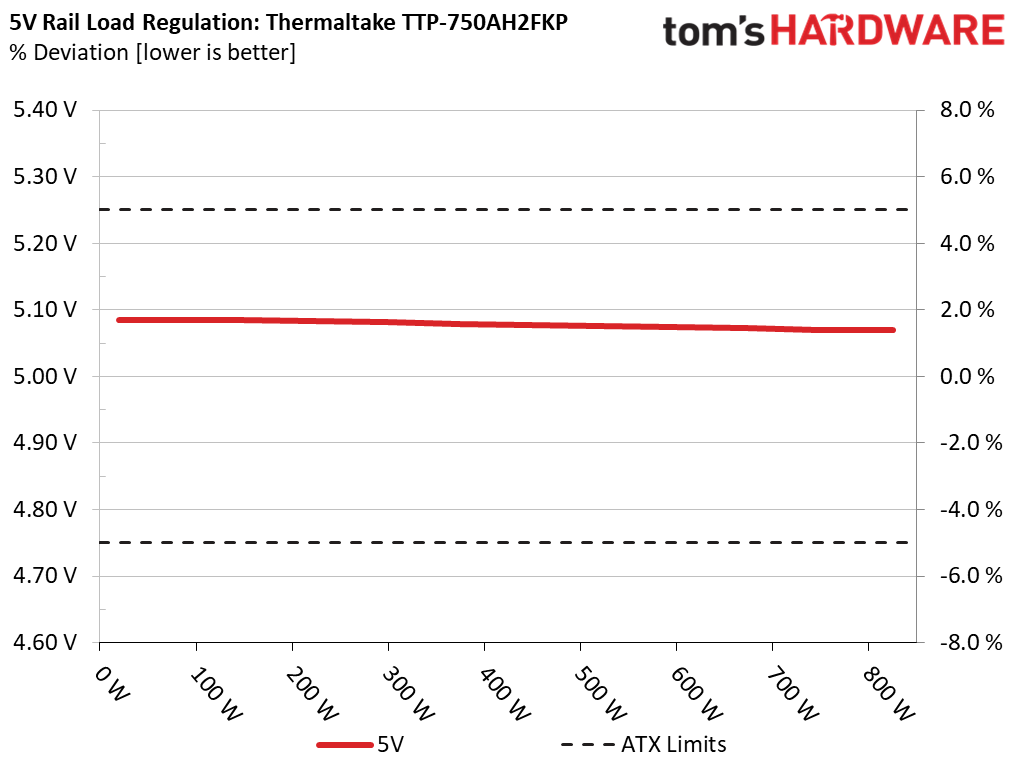
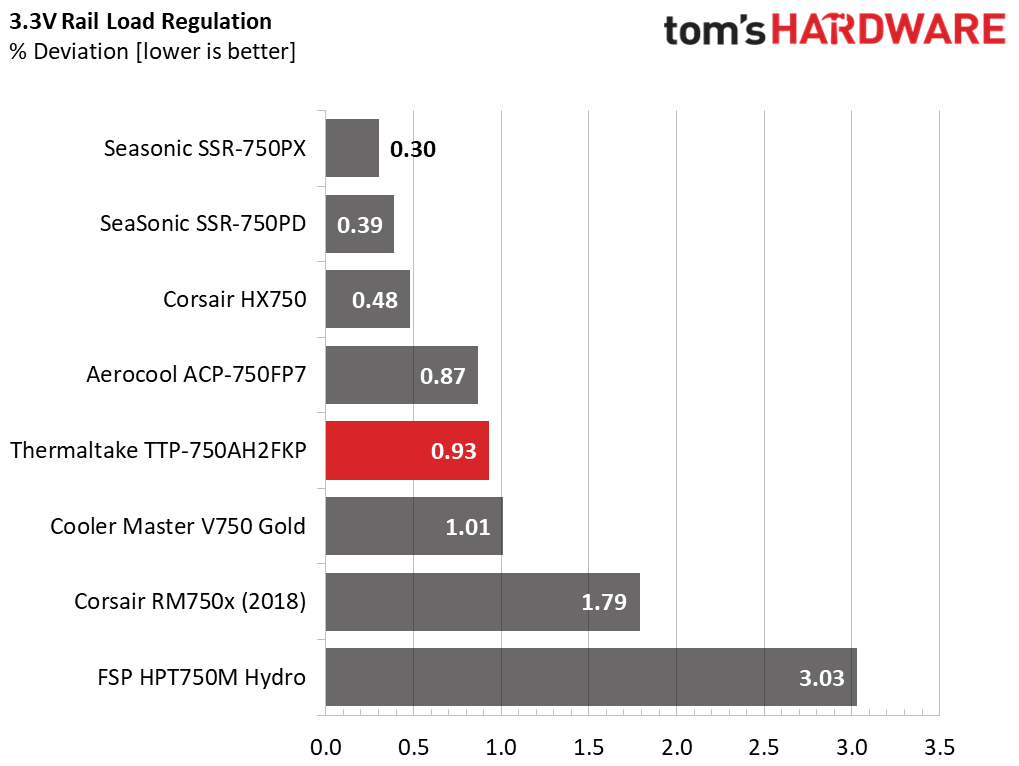

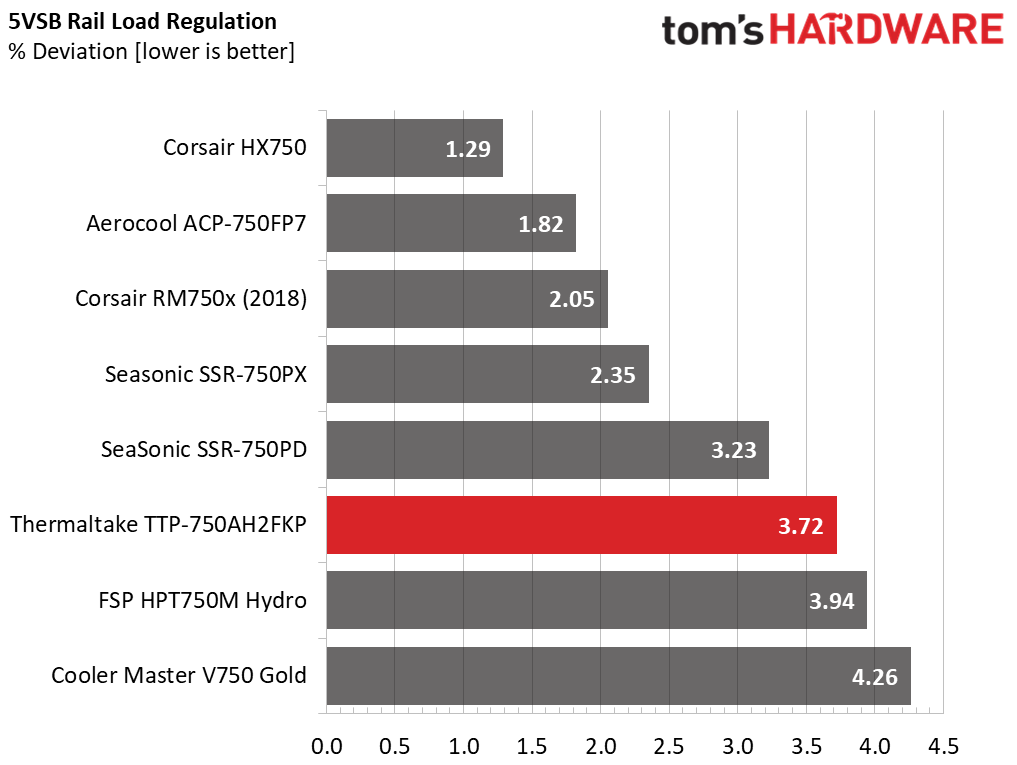

Load regulation is tight on all rails, but 5VSB where it doesn't matter so much.
Hold-Up Time
Put simply; hold-up time is the amount of time that the system can continue to run without shutting down or rebooting during a power interruption.

Results 9-12: Hold-Up Time
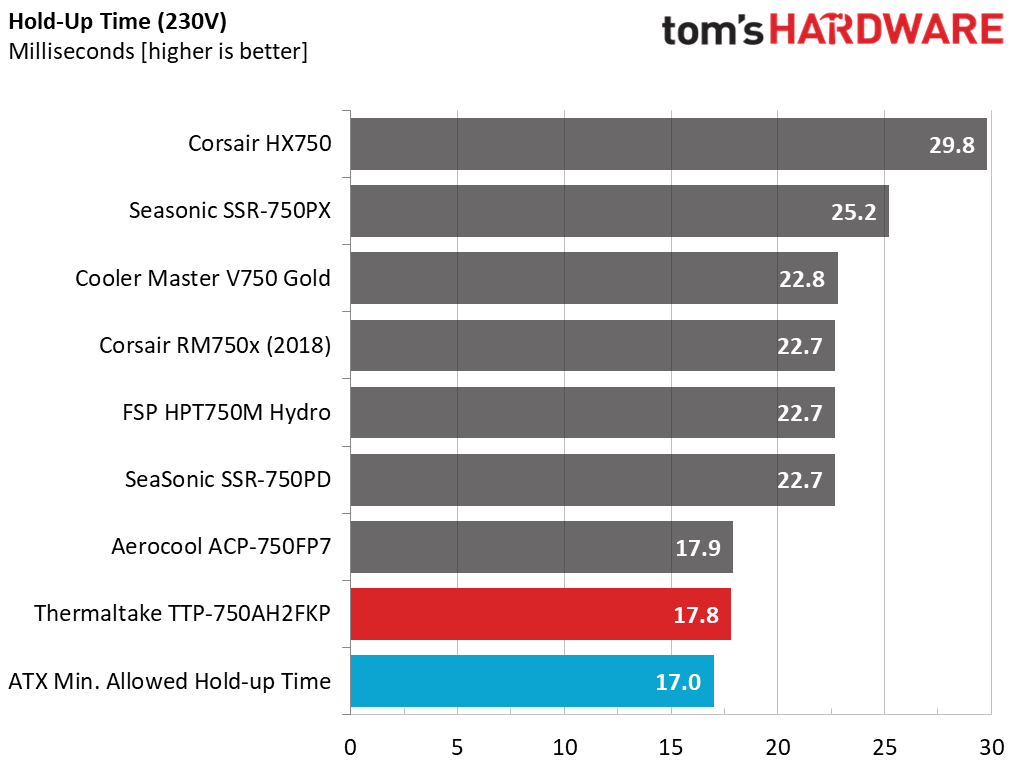
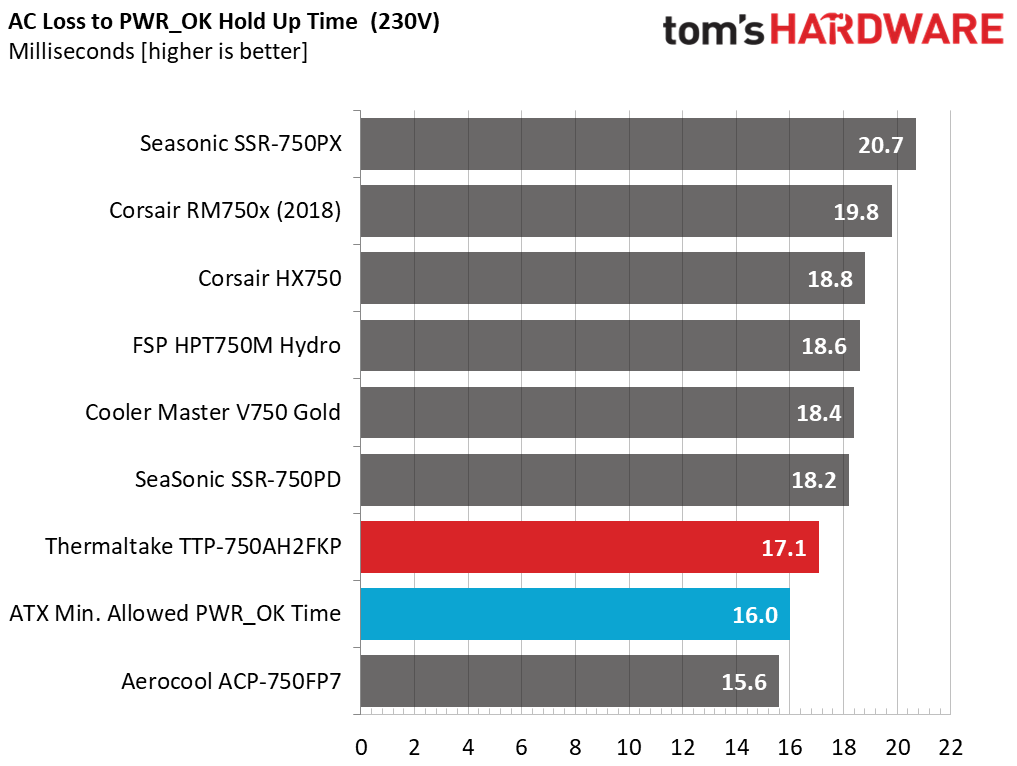
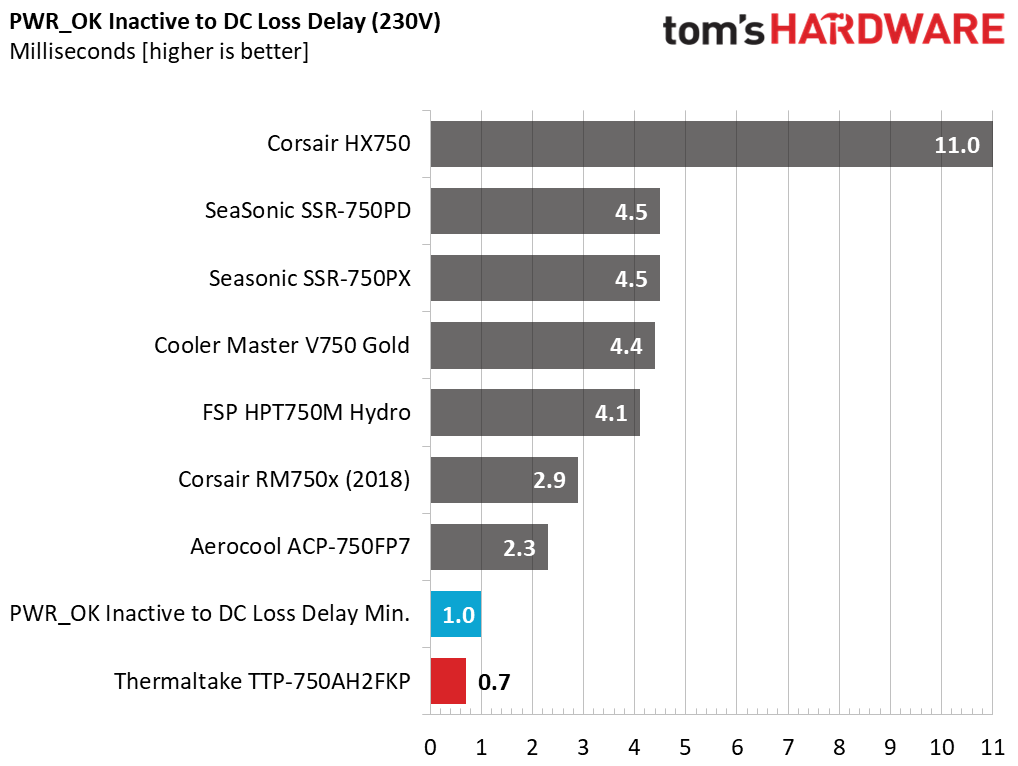
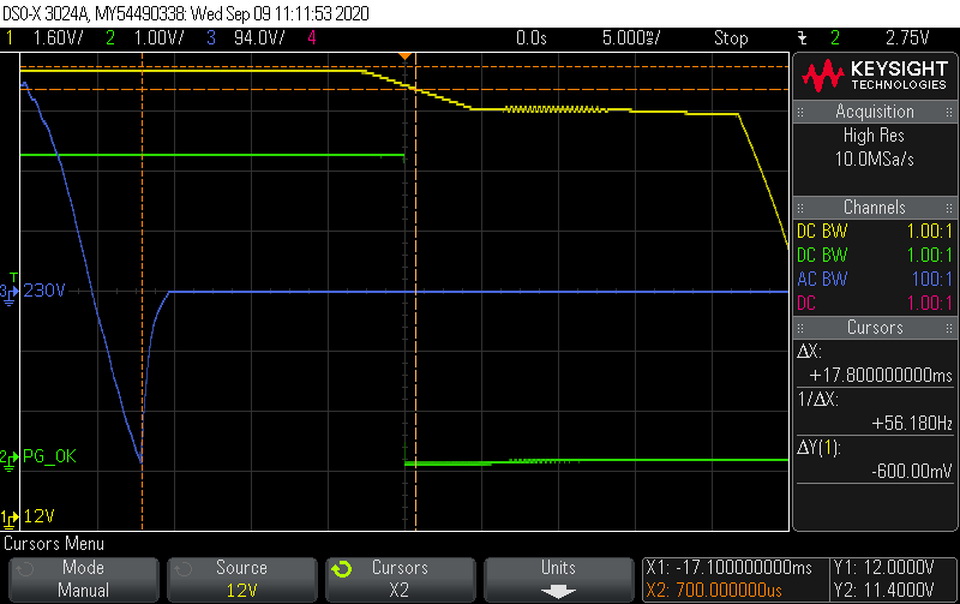
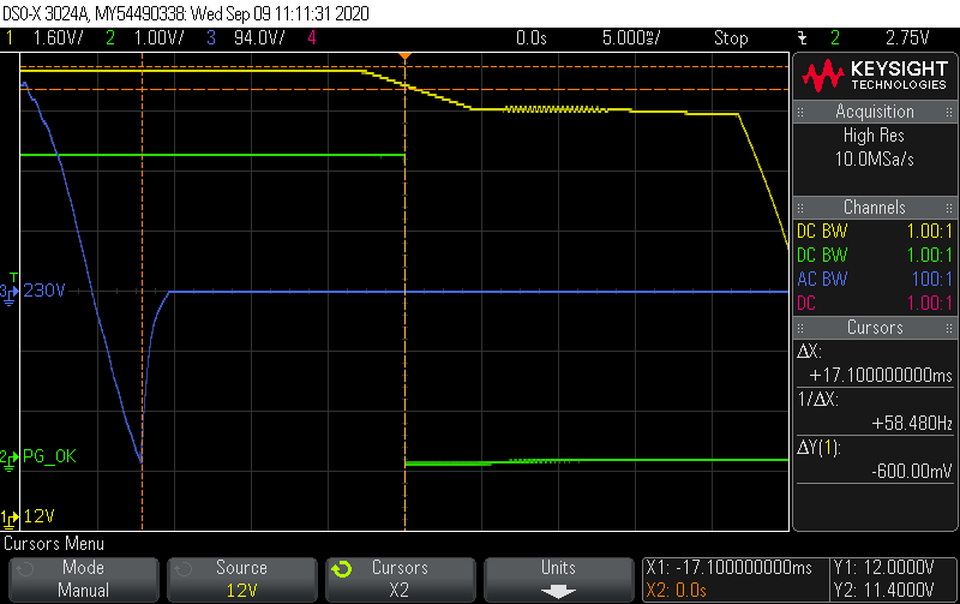
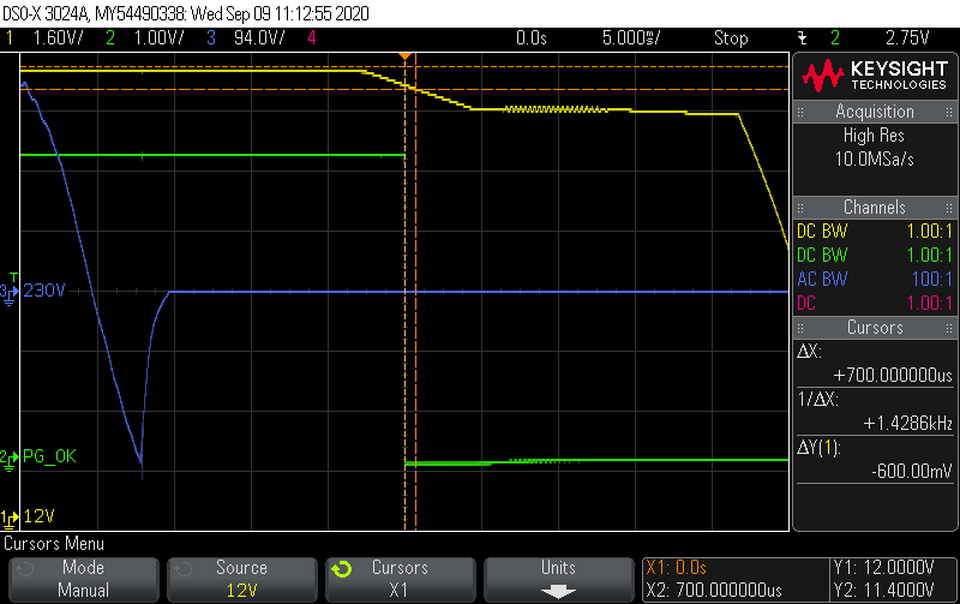
The hold-up time is longer than 17ms and the power ok signal is accurate, so everything is good here. One small detail is that the delay period should be 1ms, at least.
Inrush Current
Inrush current, or switch-on surge, refers to the maximum, instantaneous input current drawn by an electrical device when it is first turned on. A large enough inrush current can cause circuit breakers and fuses to trip. It can also damage switches, relays, and bridge rectifiers. As a result, the lower the inrush current of a PSU right as it is turned on, the better.
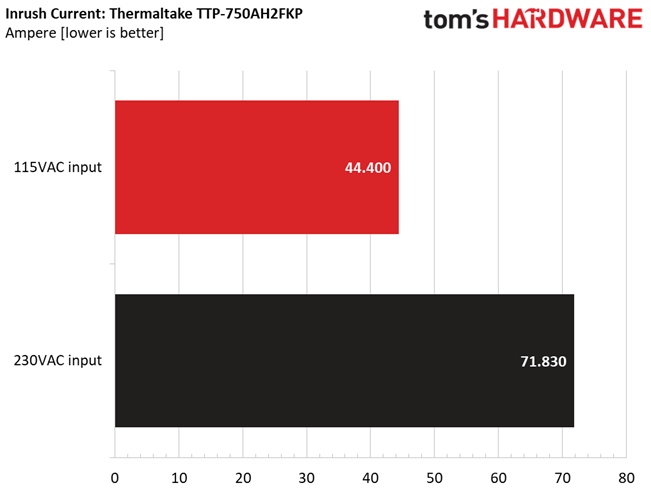
Results 13-14: Inrush Current
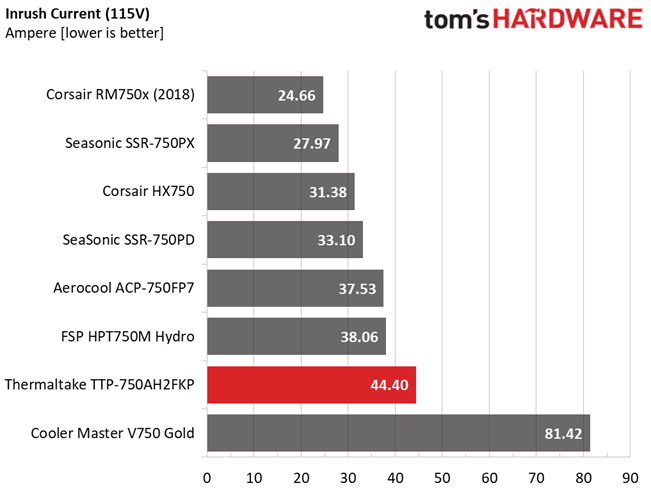
The inrush current is at normal levels with both voltage inputs.
Get Tom's Hardware's best news and in-depth reviews, straight to your inbox.
Leakage Current
In layman's terms, leakage current is the unwanted transfer of energy from one circuit to another. In power supplies, it is the current flowing from the primary side to the ground or the chassis, which in the majority of cases is connected to the ground. For measuring leakage current, we use a GW Instek GPT-9904 electrical safety tester instrument.
The leakage current test is conducted at 110% of the DUT's rated voltage input (so for a 230-240V device, we should conduct the test with 253-264V input). The maximum acceptable limit of a leakage current is 3.5 mA and it is defined by the IEC-60950-1 regulation, ensuring that the current is low and will not harm any person coming in contact with the power supply's chassis.
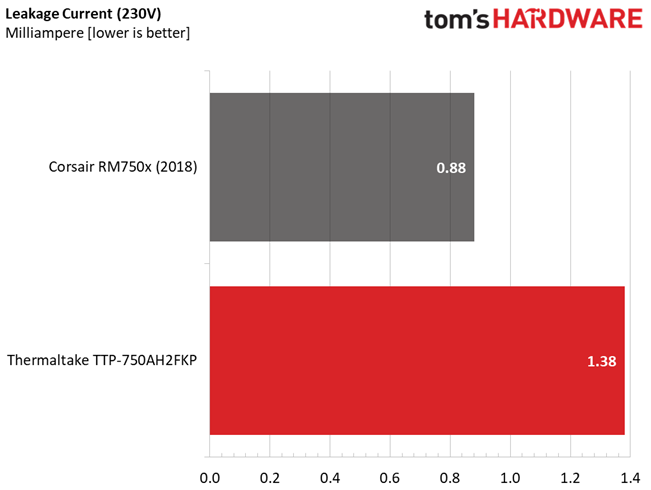
Low enough leakage current.
10-110% Load Tests
These tests reveal the PSU's load regulation and efficiency levels under high ambient temperatures. They also show how the fan speed profile behaves under increased operating temperatures.
| Test # | 12V | 5V | 3.3V | 5VSB | DC/AC (Watts) | Efficiency | Fan Speed (RPM) | PSU Noise (dB[A]) | Temps (In/Out) | PF/AC Volts |
| 1 | 4.419A | 1.967A | 1.973A | 0.982A | 74.973 | 88.331% | 0 | <6.0 | 44.60°C | 0.953 |
| 12.078V | 5.085V | 3.343V | 5.093V | 84.877 | 40.00°C | 115.13V | ||||
| 2 | 9.861A | 2.951A | 2.965A | 1.182A | 150.052 | 91.314% | 0 | <6.0 | 45.77°C | 0.974 |
| 12.083V | 5.084V | 3.339V | 5.075V | 164.326 | 40.75°C | 115.13V | ||||
| 3 | 15.639A | 3.443A | 3.461A | 1.384A | 225.064 | 92.257% | 0 | <6.0 | 47.37°C | 0.985 |
| 12.086V | 5.083V | 3.337V | 5.059V | 243.952 | 41.60°C | 115.13V | ||||
| 4 | 21.410A | 3.938A | 3.962A | 1.587A | 300.087 | 92.369% | 559 | <6.0 | 41.66°C | 0.990 |
| 12.091V | 5.081V | 3.334V | 5.041V | 324.880 | 48.43°C | 115.13V | ||||
| 5 | 26.803A | 4.925A | 4.956A | 1.792A | 374.750 | 91.857% | 582 | <6.0 | 42.04°C | 0.993 |
| 12.097V | 5.078V | 3.330V | 5.023V | 407.970 | 49.55°C | 115.12V | ||||
| 6 | 32.206A | 5.911A | 5.954A | 1.999A | 449.669 | 91.477% | 835 | 17.3 | 42.17°C | 0.995 |
| 12.105V | 5.077V | 3.326V | 5.004V | 491.565 | 50.95°C | 115.12V | ||||
| 7 | 37.640A | 6.898A | 6.959A | 2.208A | 524.990 | 90.945% | 966 | 22.5 | 43.49°C | 0.995 |
| 12.111V | 5.076V | 3.321V | 4.985V | 577.260 | 52.73°C | 115.12V | ||||
| 8 | 43.097A | 7.888A | 7.958A | 2.418A | 600.306 | 90.248% | 1059 | 25.6 | 43.64°C | 0.996 |
| 12.109V | 5.074V | 3.319V | 4.966V | 665.172 | 53.49°C | 115.12V | ||||
| 9 | 48.922A | 8.384A | 8.445A | 2.422A | 674.838 | 89.666% | 1574 | 37.6 | 44.80°C | 0.996 |
| 12.107V | 5.072V | 3.317V | 4.956V | 752.612 | 55.27°C | 115.11V | ||||
| 10 | 54.716A | 8.880A | 8.964A | 2.530A | 749.951 | 88.962% | 1808 | 41.3 | 45.91°C | 0.997 |
| 12.112V | 5.070V | 3.314V | 4.942V | 843.003 | 57.19°C | 115.11V | ||||
| 11 | 60.912A | 8.880A | 8.968A | 2.535A | 825.177 | 88.178% | 2168 | 46.2 | 46.64°C | 0.997 |
| 12.115V | 5.069V | 3.313V | 4.933V | 935.805 | 58.31°C | 115.10V | ||||
| CL1 | 0.101A | 12.004A | 11.999A | 0.000A | 102.078 | 85.683% | 592 | 6.5 | 41.91°C | 0.967 |
| 12.123V | 5.081V | 3.322V | 5.110V | 119.135 | 49.52°C | 115.13V | ||||
| CL2 | 62.022A | 1.000A | 1.000A | 1.000A | 764.762 | 89.507% | 1804 | 41.1 | 45.55°C | 0.997 |
| 12.114V | 5.076V | 3.333V | 5.018V | 854.418 | 57.05°C | 115.10V |
The PSU can deliver full power at high temperatures for prolonged periods, without any problems. We had to overload the power supply, to force its fan spin at full speed.
20-80W Load Tests
In the following tests, we measure the PSU's efficiency at loads significantly lower than 10% of its maximum capacity (the lowest load the 80 PLUS standard measures). This is important for representing when a PC is idle with power-saving features turned on.
| Test # | 12V | 5V | 3.3V | 5VSB | DC/AC (Watts) | Efficiency | Fan Speed (RPM) | PSU Noise (dB[A]) | PF/AC Volts |
| 1 | 1.231A | 0.492A | 0.493A | 0.195A | 19.998 | 75.116% | 0 | <6.0 | 0.716 |
| 12.060V | 5.085V | 3.346V | 5.133V | 26.623 | 115.13V | ||||
| 2 | 2.461A | 0.983A | 0.985A | 0.391A | 39.989 | 83.661% | 0 | <6.0 | 0.872 |
| 12.065V | 5.085V | 3.345V | 5.123V | 47.799 | 115.13V | ||||
| 3 | 3.693A | 1.475A | 1.481A | 0.587A | 60.020 | 86.965% | 0 | <6.0 | 0.932 |
| 12.068V | 5.085V | 3.344V | 5.112V | 69.016 | 115.13V | ||||
| 4 | 4.918A | 1.967A | 1.973A | 0.784A | 79.972 | 89.160% | 0 | <6.0 | 0.963 |
| 12.073V | 5.085V | 3.343V | 5.101V | 89.695 | 115.13V |
It has high efficiency and silent operation, under light loads, even at high ambient temperatures.
2% or 10W Load Test
Intel plans on raising the ante at efficiency levels under ultra-light loads. So from July 2020, the ATX spec requires 70% and higher efficiency with 115V input. The applied load is only 10W for PSUs with 500W and lower capacities, while for stronger units we dial 2% of their max-rated-capacity.
| Test # | 12V | 5V | 3.3V | 5VSB | DC/AC (Watts) | Efficiency | Fan Speed (RPM) | PSU Noise (dB[A]) | PF/AC Volts |
| 1 | 1.088A | 0.212A | 0.211A | 0.044A | 15.112 | 71.384% | 0 | <6.0 | 0.658 |
| 12.042V | 5.084V | 3.346V | 5.141V | 21.170 | 115.13V |
Impressive efficiency with 2% load.
Efficiency & Power Factor
Next, we plotted a chart showing the PSU’s efficiency at low loads, and loads from 10 to 110% of its maximum rated capacity. The higher a PSU’s efficiency, the less energy goes wasted, leading to a reduced carbon footprint and lower electricity bills. The same goes for Power Factor.

Results 15-18: Efficiency
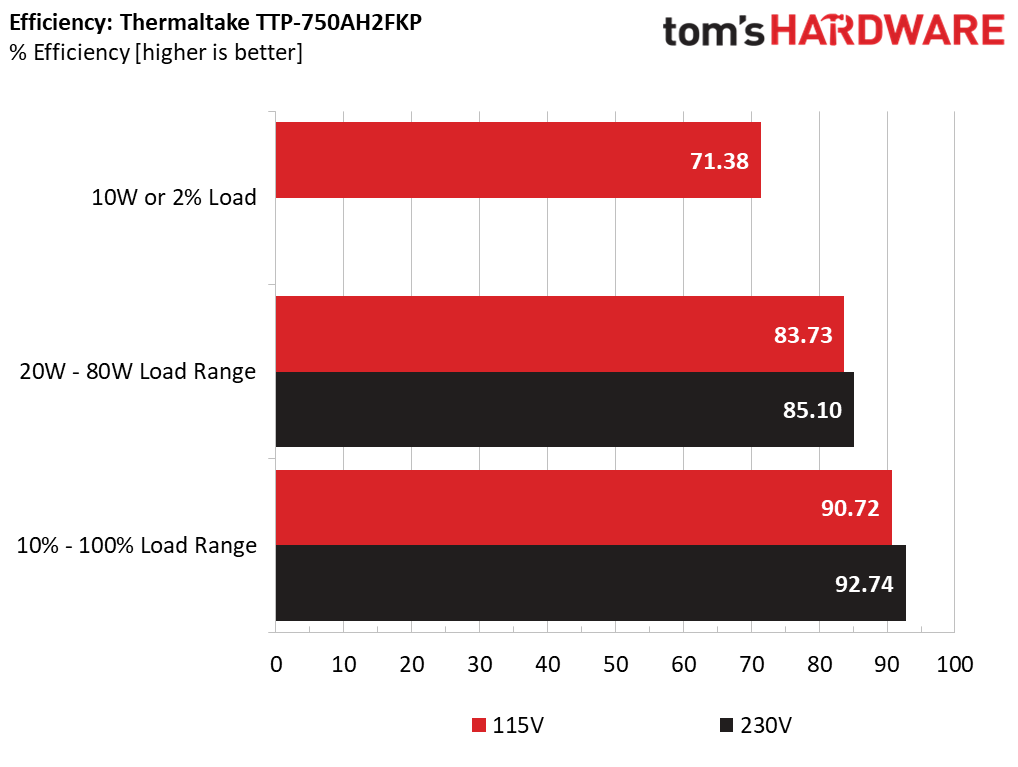
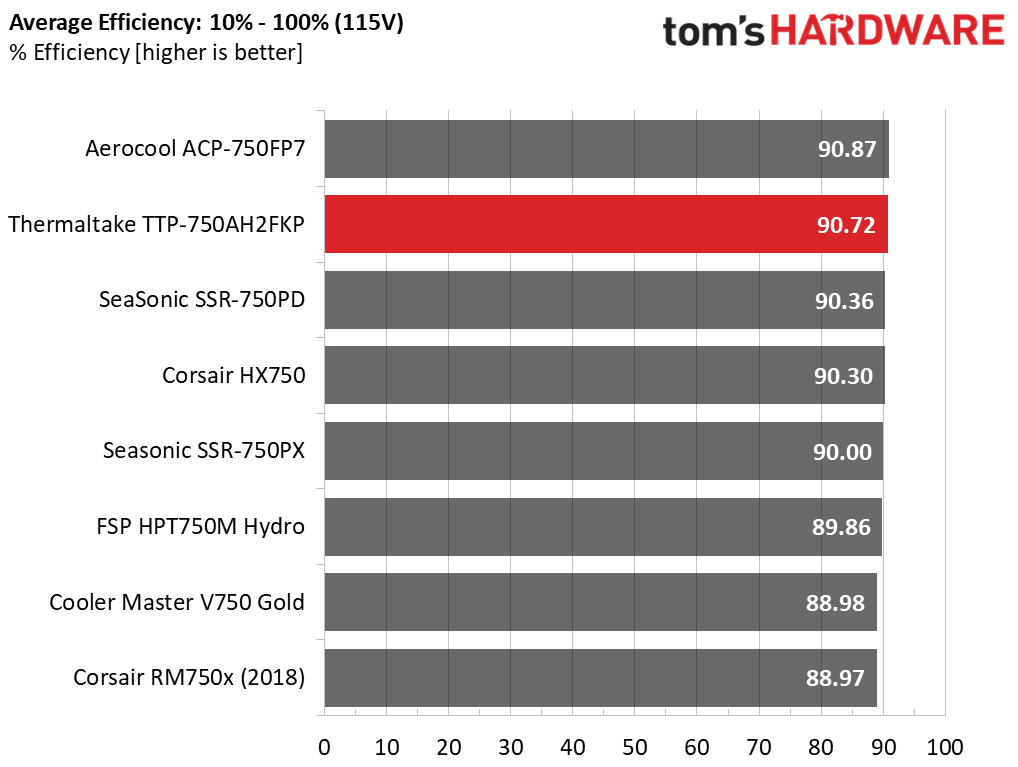
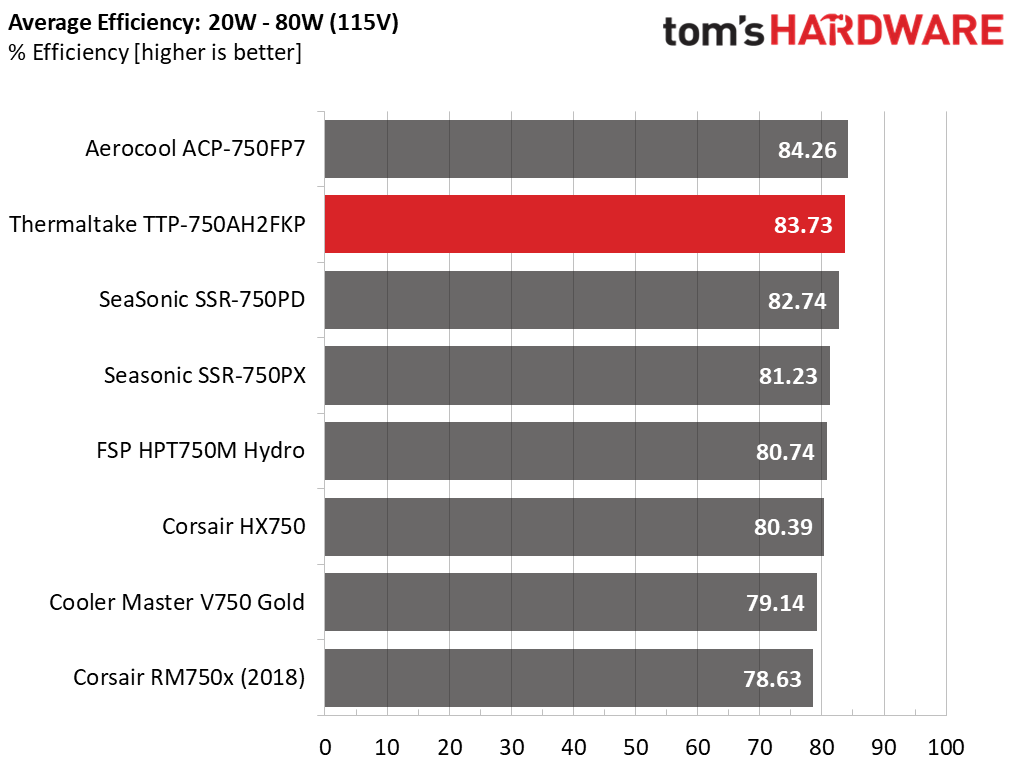


This is a highly efficient platform, especially with 230V input. As you can see in the charts above, the PSU scores high in every load segment.
The Power Factor readings are high enough with 115V but not as high with 230V. HKC has to tune the APFC converter to make it more efficient.
5VSB Efficiency
| Test # | 5VSB | DC/AC (Watts) | Efficiency | PF/AC Volts |
| 1 | 0.100A | 0.514 | 75.256% | 0.076 |
| 5.141V | 0.683 | 115.13V | ||
| 2 | 0.250A | 1.284 | 79.505% | 0.163 |
| 5.135V | 1.615 | 115.13V | ||
| 3 | 0.550A | 2.819 | 80.936% | 0.274 |
| 5.124V | 3.483 | 115.13V | ||
| 4 | 1.000A | 5.108 | 81.325% | 0.354 |
| 5.107V | 6.281 | 115.13V | ||
| 5 | 1.500A | 7.632 | 80.925% | 0.399 |
| 5.087V | 9.431 | 115.13V | ||
| 6 | 2.500A | 12.622 | 79.244% | 0.444 |
| 5.048V | 15.928 | 115.13V |

Results 19-20: 5VSB Efficiency
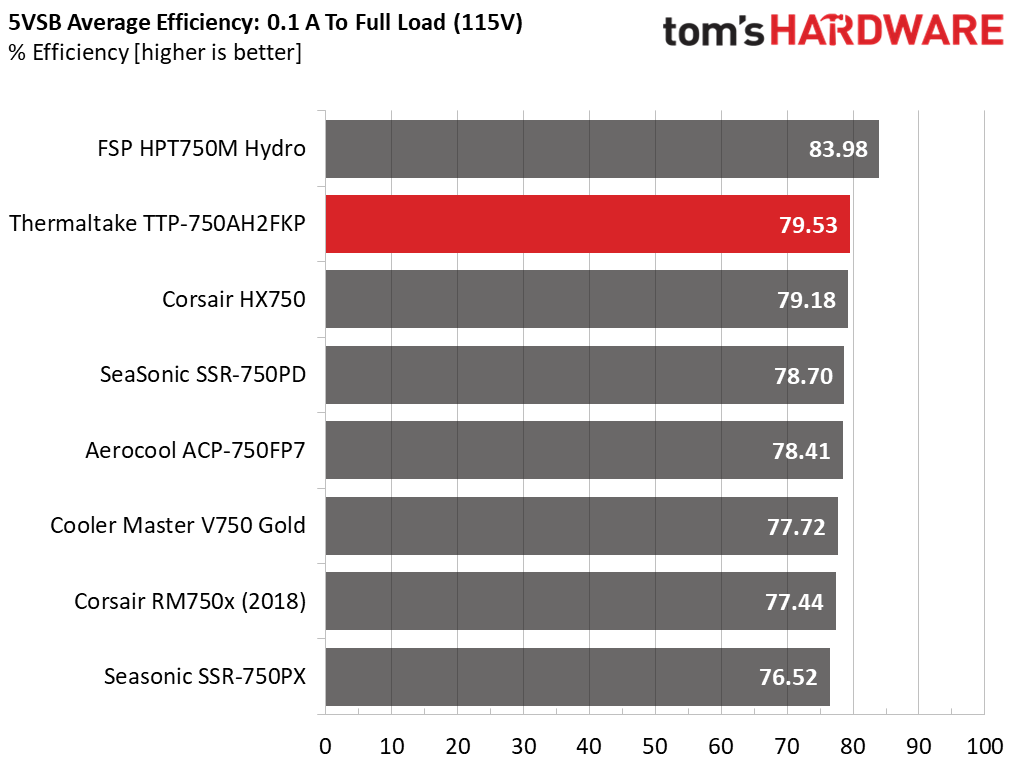


The 5VSB rail is highly efficient, but FSP did a fantastic job in its power supply, leaving the competition far behind in this performance metric, at least.
Power Consumption In Idle And Standby
| Mode | 12V | 5V | 3.3V | 5VSB | Watts | PF/AC Volts |
| Idle | 12.020V | 5.080V | 3.345V | 5.144V | 5.433 | 0.315 |
| 115.1V | ||||||
| Standby | 0.056 | 0.006 | ||||
| 115.1V |
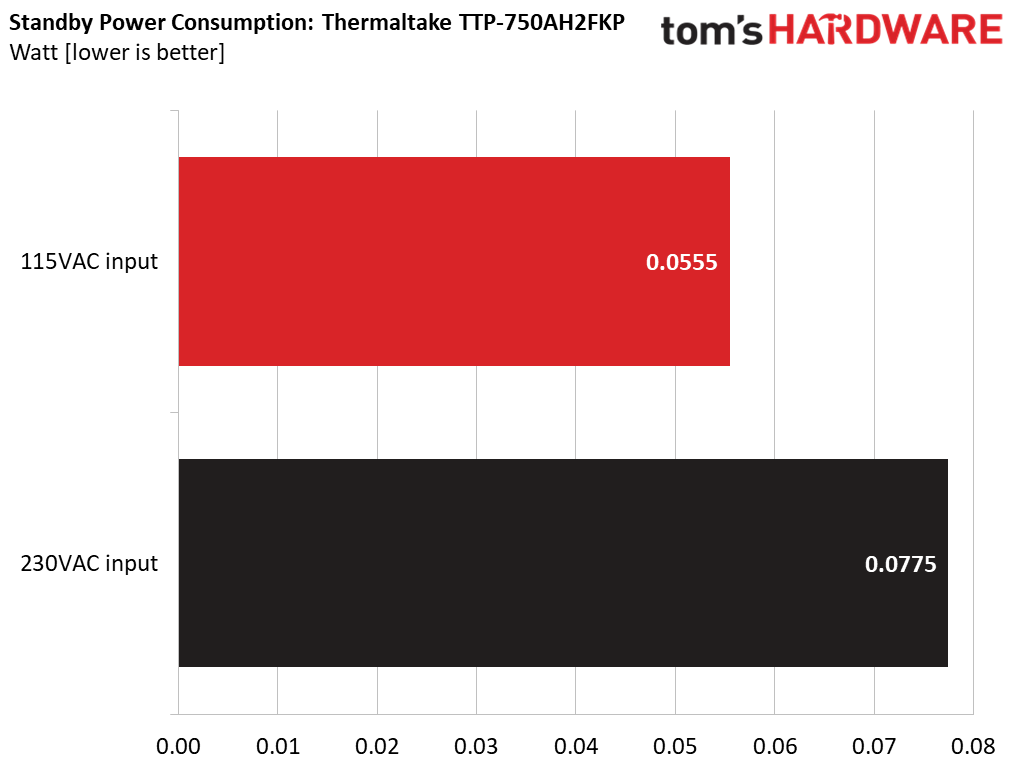
Results 21-22: Vampire Power
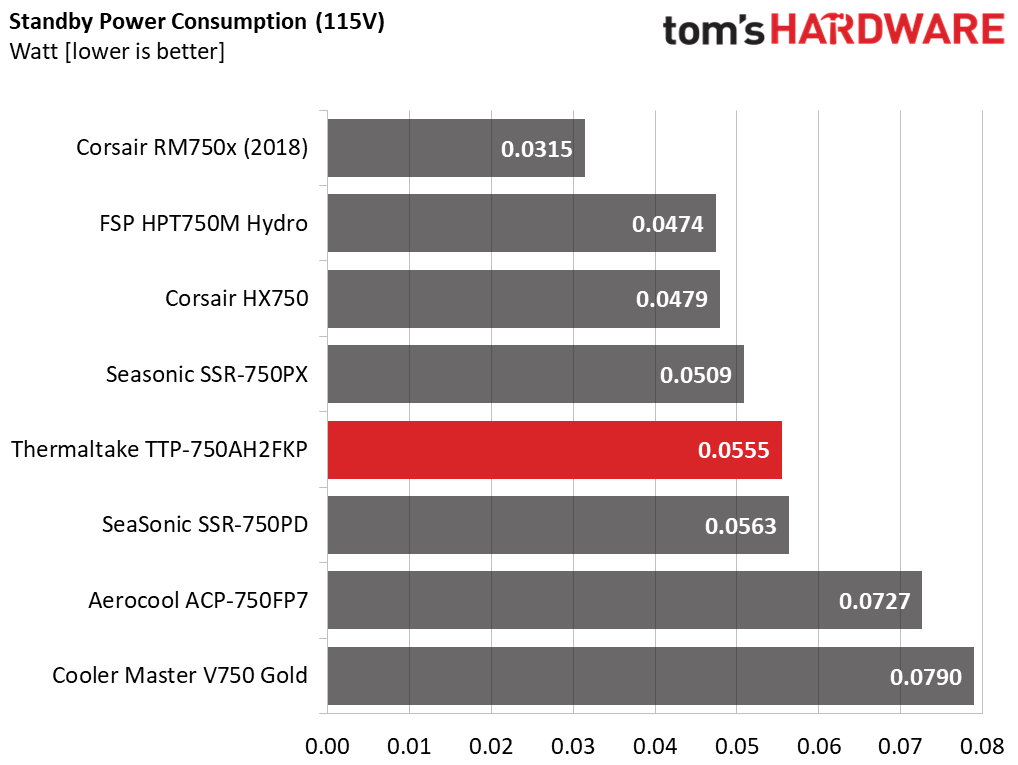
Vampire power consumption is low with both voltage inputs.
Fan RPM, Delta Temperature, And Output Noise
All results are obtained between an ambient temperature of 37 to 47 degrees Celsius (98.6 to 116.6 degrees Fahrenheit).
The fan speed profile is relaxed, even under high operating temperatures.
The following results were obtained at 30 to 32 degrees Celsius (86 to 89.6 degrees Fahrenheit) ambient temperature.
Given the relaxed fan speed profile, we expected even lower fan speeds at normal operating temperatures. Not that this is a loud power supply, but it would be nice to see an even lower average noise output, as long as it doesn't compromise the product's reliability.
MORE: Best Power Supplies
MORE: How We Test Power Supplies
MORE: All Power Supply Content
Current page: Load Regulation, Hold-Up Time, Inrush & Leakage Current, Efficiency and Noise
Prev Page Specifications and Part Analysis Next Page Protection Features, DC Power Sequencing, Cross-Load Tests and Infrared Images
Aris Mpitziopoulos is a contributing editor at Tom's Hardware, covering PSUs.
-
bdcrlsn I know they're not actually made by Thermaltake, but I've had a Toughpower 650-watt for 7 years and had no issues whatsoever. They're good choices these days in a saturated market.Reply -
Braindead154 I bought two of these power supplies to use in my new rig. BOTH of them had a high pitched whine when my computer was off or sleeping (MSI MEG x570 Unify). As much as I appreciated the long warranty and build quality, I prefer not to have a dog whistle in my PC case. They were returned.Reply

